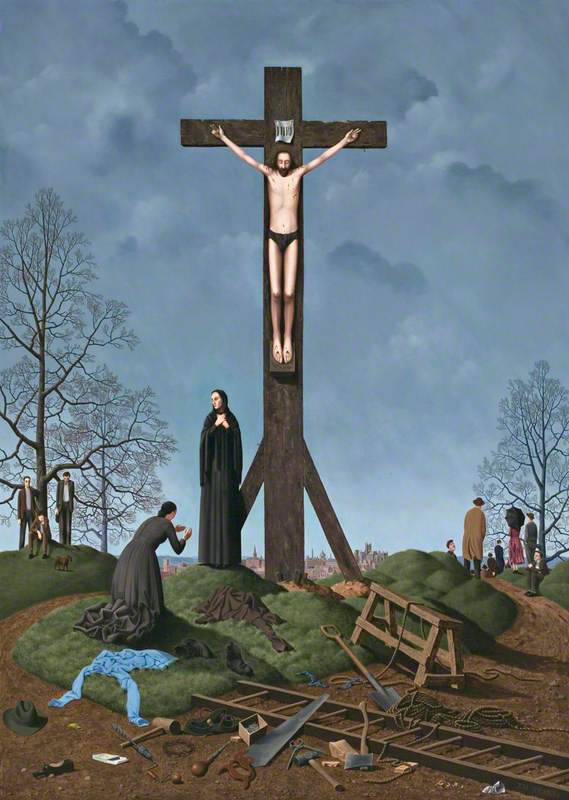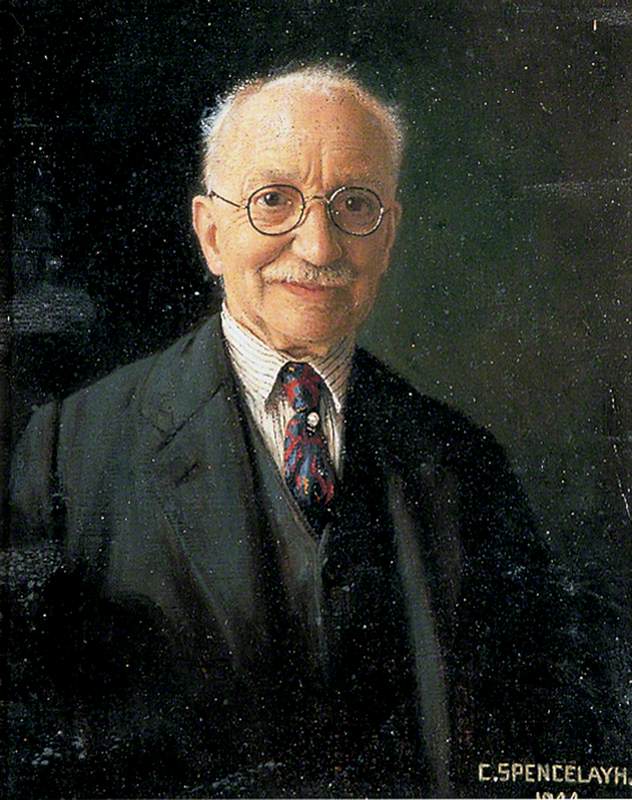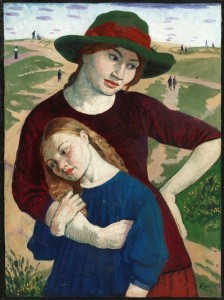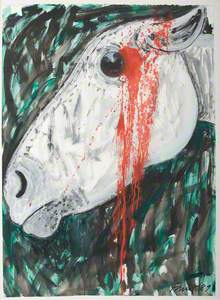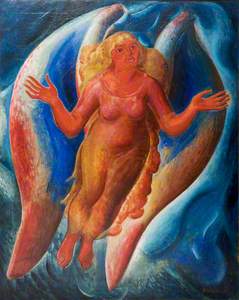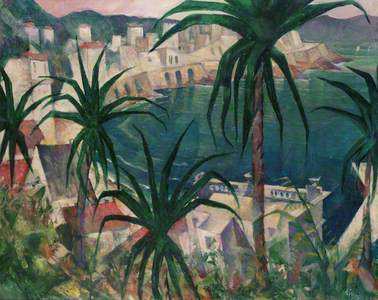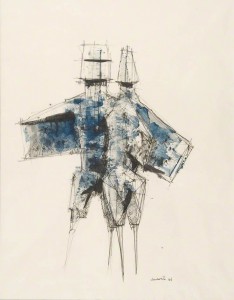The Ingram Collection of Modern and Contemporary British Art includes almost 600 paintings and sculptures spanning 100 years. It’s one of the most significant collections of modern British art in the UK. Owned privately by entrepreneur and philanthropist Chris Ingram, it's on display at The Lightbox public art gallery in Woking, Surrey.
In 2014, Curator Jo Baring shared some of its highlights to tie in with their exhibition 'The Impact of War'.
1.
The relationship between man and animal is a recurrent theme in sculptor and graphic artist Elisabeth Frink’s work.
Her love of horses is reflected in the vast number of bronzes she created. Here, she portrays an upsetting and traumatic event. She doesn’t shy away from a reality many would be reluctant to face, let alone paint.
The gentle rendering of the horse’s head and the fear in its eyes contrasts dramatically with the shocking red blood. The suggestion is this wound was inflicted by man on an innocent animal.
2.
Study for 'Man and Nature'
1987
Stephen Conroy (b.1964) 
Stephen Conroy, a contemporary Scottish figurative painter, graduated from the Glasgow School of Art in 1987 to critical acclaim.
The character with blank glasses appears frequently in his work, creating a sense of unease and claustrophobia.
Painted in sombre, muted colours, the shadowy figures seen in profile against the dark and menacing machinery seem intimidating and threatening.
The narrative behind the painting is unclear, and the viewer is left to question the identity and purpose of the scene.
3.
Peter Howson’s large-format paintings often arouse strong controversy. They typically show massive, predominantly male, figures drawn with muscular brushstrokes.
They illustrate a bleak, harsh and un-redemptive view of the modern world.
The figure of the man is stripped naked, and looking fearfully towards the heat of an industrial furnace. It’s reminiscent of paintings about the birth of the Industrial Revolution.
Howson's work as the official British War Artist in Bosnia in 1993 provided him with highly charged subject matter that gave a new ethical direction and motivation to his work.
4.
Host of the 4th Dimension (Red Angel)
1927
Leon Underwood (1890–1975) 
Underwood enjoyed a prolific career as a sculptor, painter and printmaker.
In 1920 he started the Brook Green School in London, where Henry Moore and Eileen Agar, amongst others, were students.
Underwood travelled to America in 1926 and painted various portraits using a palette of vibrant, hot colours.
Here, he's used the colours in a startling juxtaposition giving the traditional subject matter and composition a strikingly contemporary feel.
5.
Initially this appears to be a traditional rendering of the Crucifixion, but close examination reveals a surreal treatment of the subject.
The event is only significant to a few, the crowd having passed by with scarcely a look.
The landscape is contemporary; but it’s also a fantastical and imagined skyline typical of Renaissance artists.
Hillier has firmly placed his vision of the Biblical episode in his own time, including a cigarette packet and beer bottle in the foreground.
6.
In 1908, Gertler entered London's Slade School of Fine Art. Essentially a Realist, his work over the next decade showed his dissatisfaction with English Post-Impressionism.
He sought to bring a strength and purpose to his paintings, exemplified by bold, almost harsh colours and simple compositions.
Although an inanimate object, the direct gaze of the wooden doll has an unnerving effect.
It is also the subject of a painting in the collection of the Royal Pavilion and Museums, Brighton and Hove.
7.
Theseus
(final study for the 'Dome of Discovery' at The Festival of Britain) c.1950
John Keith Vaughan (1912–1977) 
The Festival of Britain in 1951 set out to celebrate the best of Britain in the wake of the Second World War.
One of the major works commissioned was a mural from the Neo-Romantic painter Keith Vaughan. It depicted explorers discovering a primeval land, the central character holding a beacon bringing light and optimism.
Sadly, the mural was destroyed after the festival. This study is the most tangible representation left of Vaughan’s contribution to this landmark event in Britain’s post-war artistic culture.
8.
Bomb Store: Study for Memorial Panel I
1942
David Bomberg (1890–1957) 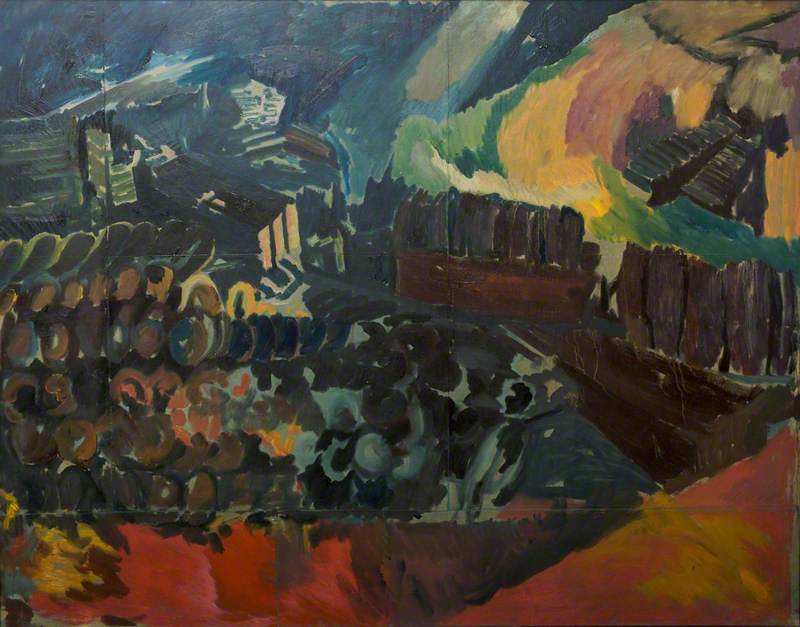
In 1942 David Bomberg was commissioned by the War Artists Advisory Committee (WAAC) to make a painting of an underground bomb store in Staffordshire.
The subject fascinated him, and his works show an awareness of the bombs’ destructive power.
This painting was in preparation for a huge memorial panel the WAAC never allowed him to finish. They wanted a more representational, rather than abstract, work.
It’s a tantalising taste of what he intended and is considered one of his finest later pieces.
9.
Nevinson was an official war artist during the First World War. He captured the experiences of the conflict in a Futurist style, fusing a modern speed and energy into his works.
La Corniche is a counterpoint to his war imagery. Here Nevinson leaves traumatic subject matter behind with a colourful depiction of the Cote d’Azur, France.
The modernist style is still visible – note the Cubist buildings.
Jo Baring, Curator, Ingram Collection of Modern and Contemporary British Art
Editor's note: This story first appeared on the BBC Arts website. The BBC is an Art UK project partner.


